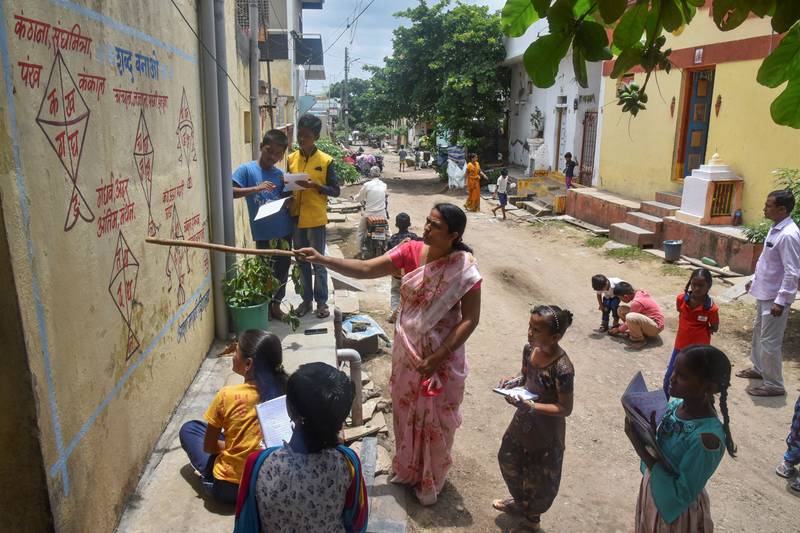India faces lost generation as Covid pandemic keeps pupils out of school

Ten PM is past bedtime for most children. For Simran Bhatt, it's the start of an hour's homework.
Simran, who is in the eighth grade, has to wait for her father to end his day as a street performer and return to their shanty town in a slum in Delhi to get her hands on the family’s only mobile phone. Even then, she has to share the time with her five siblings.
“We all study around this time,” said Simran, 13, whose state-run school in the south of the Indian capital switched to online classes in May when Covid-19 cases started to surge in the country. “We know we can’t afford another phone.”
The more affluent of India’s 250 million children have continued their classes digitally following the Covid-19 lockdown. But the shutting of schools has robbed the less privileged of a future and, according to World Bank estimates, the nation of about $200 billion.
The pandemic has left many Indian families without a breadwinner, and many children without the option of resuming their learning. Only one in four children in India has access to digital devices and the internet, Unicef estimated in November last year.
Experts worry that unemployment, the migration of workers from the cities to their villages and the digital divide may keep millions of children in India permanently out of the education system.
The 1.6 million girls in the 11 to 14 age group currently out of school face the risk of early marriage, early pregnancy, poverty, trafficking and violence, said to the Right to Education forum, a civil society collective.
The crisis will widen the existing economic disparity and further curtail access to education, said Rajiv Kumar, founder of Pardarshita, a New Delhi-based non-profit group working on education and literacy.
“Online education is a utopian concept for children from marginalised communities,” Mr Kumar said. “A smartphone is a luxury for thousands of families. If they have the device, there is no electricity to charge it or there is no money to buy data.”
Mohammad Nafees, a 35-year old worker at a gemstone factory in the northern Indian state of Rajasthan, has to take his children Afnaan and Ilma to his sister’s house for two hours for them to study. Even though the lockdown left Mr Nafees grappling to make ends meet, he continued with his children’s studies.
Giving up was not an option, he said.
But Asaad, a 45-year-old daily wage earner in eastern West Bengal state, had to take his youngest son, Habibullaah, 13, out of school to make him work at a neighbourhood tailoring shop for 50 rupees ($0.70) a day.
“I didn’t want my son to have the same fate as us,” said Asaad, who goes by one name. “But the situation pushed us to the brink.”
“I felt like crying,” Habibullaah said. “I wanted to study, but there I was at the shop getting scolded for not being able to hold the scissors properly.”
The lockdown is estimated to have forced about 10 million migrant workers to leave the cities with their families, many of them permanently.
“More than 10 children in my class of 30 have not returned from their villages,” said Seema Ahuja, a teacher in the central Indian state of Madhya Pradesh. “It has been six months now.”
Recently, the Delhi state government announced that schools would reopen, an indication that restrictions may soon be eased in other parts of the country.
That would rekindle the hopes of the millions like Simran and Habibullaah.
Source: www.thenationalnews.com
